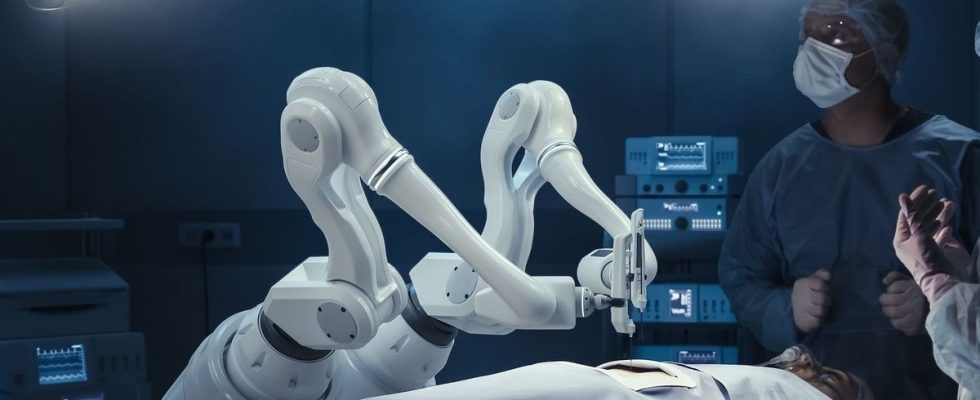Published on
Updated
Reading 1 min.
American researchers have developed an autonomous robotic system to remove tumors from the tongue with precision equal to, or even surpassing, that of a human surgeon.
A team from Johns Hopkins University in the United States has developed the ASTR system (for Autonomous System for Tumor Resection), intended to remove cancerous tumors in delicate areas such as the tongue.
Remove at-risk tissue and preserve healthy tissue
When removing cancerous tissue, the objective is both to remove all the tissues at risk and to preserve those which are perfectly healthy. However, the balance to be found is not always obvious, knowing that removing an insufficient quantity of tissue risks leaving cancer cells in place which can then spread.
It is precisely to achieve this type of intervention that ASTR was designed. The system, composed of two robotic arms, can perform a partial glossectomy. It is particularly precise, which is sometimes difficult for a human in this type of intervention.
Towards autonomous robot surgeons?
In the laboratory, this solution has already been successfully tested. The system successfully collected the equivalent of 5 mm of tissue thickness from pig tongues. To do this, the team drew the contours of the tumors then programmed the ASTR to remove the tumor to the desired thickness, in this case 5 mm.
In the future, a surgeon will be able to supervise operations very well, providing various preoperative information. The robot will then proceed step by step, according to what has been dictated to it. This first work was the subject of a publication in the journal Robotics and Automation Letters from the Institute of Electrical and Electronics Engineers (IEEE).
This is new progress for this team, which was already at the origin, two years ago, of a first entirely autonomous laparoscopic surgery technique (STAR), aimed at connecting two parts of the same intestine. While STAR focused on connecting tissues, ASTR was specifically designed to remove them. The next step will be to intervene on internal organs such as the kidney, performing a dissection to access the tumor.
